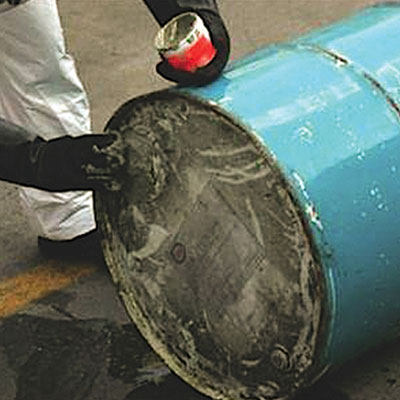Providing the right spill kits and the right training for workshop environments
We often think of oil spills and environmental incidents in terms of big events with major media coverage. But, the average workshop with its normal activities and products is vulnerable to spills too.
Regulators investigate any spill that affects the environment and issue fines to companies that have failed to provide adequate protection against spills. Two of the major criteria investigators look for are:
- Are the employees trained so that they know what to do when a spill occurs?
- Are spill kits in place to contain and clean spills before they affect the environment?
Managing the inventory and maintenance of spill kits in workshops goes a long way towards controlling spills, satisfying regulators and fulfilling the company’s responsibilities.
Want more information about workshop spill kits? Contact us on 1800 368 450 or read on.
What should a workshop spill kit contain?

Plug and dike
The primary spill risk in a standard workshop environment is fuel and oil. A spill kit specifically designed to combat these risks will contain items like:
- Floorsweep absorbs hydrocarbon liquids and prevents them from spreading further.
- Booms and absorbent pads contain the area of the spill and soak up the liquid.
- Plug and dike is a fast sealing material that seals a leaking drum or container. It works even when wet from the product leak.
- Waste disposal bags are clearly marked. Employees dispose of the waste material in these bags to an approved disposal site.
- PPE kits are essential to protect employees from injury while they clean up the spill.
Other spill hazards may be present in a workshop, which require additional spill kit resources. Acids and bases can be cleaned using a special type of floorsweep called Zeosorb. This product encapsulates the liquid and also inhibits odours.
Where should a spill kit be placed?
Because spill kits are not used every day, there is a danger that employees move them out of the way, so they become obscured by other equipment. This is very dangerous because a spill kit must be easily accessible and clearly visible in an emergency.
It is often beneficial to have a few smaller spill kits rather than one large kit. Smaller kits are easier to move and can be spread out to cover the high-risk areas.
How should employees be trained?
Regulators investigating an incident always check the level of training of employees:
- Do they know how the workshop spill kit equipment works?
- Do they know what steps to take in the case of an emergency?
- Are they aware of the correct disposal of contaminated waste?
Regular refresher training should be carried out with all employees. Records of this training can then be supplied to regulators should the need arise. Although some companies choose to do this training in-house, it is advisable to use a service provider who is an expert in the field. This will keep the standard of training high and ensure that no knowledge is lost when experienced employees change department.
Do you need spill compliance training for employees on your site? Find out more about SpillPro training and certification for workplaces here.
How can I keep my spill kit maintained?
Proactive maintenance plans should be put in place for spill kits. Emergency responders rely on the completeness of the kit and the equipment being in good working order. Each spill kit should have an inventory associated with it so that anyone can check whether the contents are complete or not.
Checklists are simple to design and can also be obtained from service providers. A regular maintenance check should include the state of the inventory and the condition of the equipment. Inspections involve removing the equipment from the kit and examining its condition. Worn equipment must be replaced as soon as possible, and missing inventory must be resupplied.
Secure spill kits are secured with seals. This prevents the unauthorised use of spill equipment and provides an easy to see evidence of the state of the spill kit. The breaking of a seal can even be used to initiate a site incident, which is then investigated.
Contact SpillPro for more information about spill kit inventory and maintenance
SpillPro has extensive experience in supply and maintenance of spill kits. Our technical experts can conduct a risk assessment in your business and customise spill kits for your needs as well as run your training.
Find out more about SpillPro workshop solutions here and our spill kit products here. Call our expert team on 1800 368 450 today to discuss workshop spill kits and training for your business.
Must Read
SpillPro on 25 October 2023
Spill Kit Maintenance: A 10-Point Checklist
Consistent maintenance of your spill kit guarantees its readiness for immediate use. Discover more. ...
Read moreSpillPro on 24 October 2016
10 point spill kit maintenance checklist
Here's how to keep your spill kit functioning as it should with regular maintenance ...
Read more